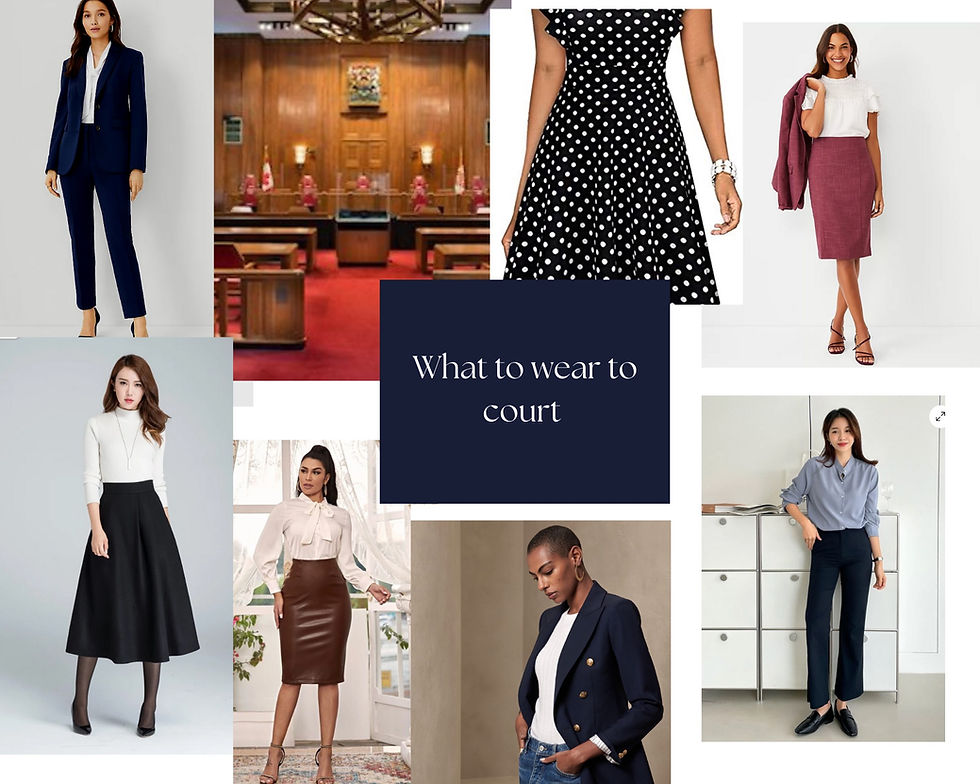What to Wear to Court for Women
When appearing in court, whether as a defendant, witness, or juror, it’s crucial to dress appropriately. The way you present yourself can significantly impact how others perceive you and your credibility. Choosing the right attire involves considering several factors, such as professionalism, modesty, and respectability.
General Guidelines
When selecting an outfit for court, opt for a professional and respectable appearance. Your clothing should convey that you take the court proceedings seriously and respect the legal system. Choose modest and conservative pieces that don’t draw unnecessary attention to yourself. Ensure your clothing is clean, well-pressed, and free of any tears or stains.
Specific Clothing Items
Tops
For tops, choose blouses, sweaters, or jackets in neutral colors like white, black, navy, or gray. Avoid low-cut necklines, sheer fabrics, or anything too revealing. Ensure your top is not too tight or baggy and that it covers your shoulders and midriff.
Bottoms
Opt for skirts or dress pants in conservative colors and styles. Skirts should be knee-length or slightly below, and avoid high slits or tight fits. Dress pants should be well-tailored and not too form-fitting. Steer clear of jeans, shorts, or leggings.
Dresses
If you choose to wear a dress, select a professional style such as a sheath or A-line dress. Ensure the dress is knee-length or slightly below and not too revealing. Avoid bold patterns or bright colors, and opt for neutral tones instead.
Shoes
Wear closed-toe shoes in a neutral color, such as black or brown. Choose low to moderate heels for comfort and professionalism. Avoid open-toe shoes, sandals, or sneakers.
Accessories
Keep accessories minimal and conservative. Choose simple, professional jewelry such as stud earrings, a delicate necklace, or a watch. Avoid large or flashy pieces that may distract from your overall appearance. Carry a simple and professional handbag that complements your outfit.
Grooming and Hygiene
In addition to your attire, your grooming and hygiene play a significant role in your court appearance. Ensure your hair is neat, tidy, and styled in a professional manner. If you wear makeup, keep it natural and minimal. Avoid heavy perfumes or colognes that may be overwhelming in a closed courtroom setting. Keep your nails well-manicured and choose neutral polish colors if desired.
What to Avoid
When dressing for court, there are several items to avoid. Steer clear of revealing or provocative clothing, such as low-cut tops, short skirts, or tight-fitting garments. Avoid casual attire like jeans, t-shirts, or shorts. Bold patterns and bright colors can also be distracting, so it’s best to stick with neutral tones. Lastly, avoid wearing heavy perfumes or colognes that may be off-putting to others in the courtroom.
Specific Court Situations
Jury Duty When serving on a jury, dress in business casual attire that is comfortable enough to sit in for extended periods. Avoid clothing with political statements or graphics that may influence other jurors.
Testifying as a Witness
If you are testifying as a witness, dress professionally to convey credibility and respectability. Choose conservative clothing that doesn’t draw unnecessary attention to yourself.
Attending a Hearing or Trial
When attending a hearing or trial as an observer, dress in business casual attire that shows respect for the court proceedings. Avoid distracting or inappropriate clothing that may disrupt the proceedings.
Adapting to Different Court Settings
The dress code may vary slightly depending on the court setting. In federal court, the dress code tends to be more formal and conservative compared to local courts. Similarly, some proceedings may be more formal than others, such as a trial versus a routine hearing. Adjust your attire accordingly based on the specific court setting and the nature of the proceedings.
Dressing for Success
Dressing appropriately for court can boost your confidence and credibility. When you look professional and put-together, you feel more self-assured and prepared to handle the court proceedings. Additionally, your attire shows respect for the court and the legal system, which can positively impact how others perceive you.
Conclusion
In conclusion, dressing appropriately for court is essential for women to convey professionalism, credibility, and respect. By following the general guidelines and specific clothing recommendations outlined above, you can ensure that your attire positively represents you in the courtroom. Remember to keep your clothing conservative, modest, and well-maintained, and pay attention to grooming and hygiene. By dressing for success, you can approach your court appearance with confidence and focus on the legal matters at hand.
FAQs
Can I wear a pantsuit to court?
Yes, a well-tailored, professional pantsuit in a neutral color is acceptable for court.
Are Sleeveless Tops Acceptable?
It’s best to avoid sleeveless tops and opt for blouses or dresses with sleeves to maintain a more conservative appearance.
What if I don’t have formal clothing?
If you don’t own formal clothing, consider borrowing from a friend or family member, or purchasing affordable options at a consignment store or thrift shop.
Are religious or cultural attire allowed?
Most courts allow religious or cultural attire, such as headscarves or turbans, as long as they are neat and conservative.
Can I bring a coat or jacket?
Yes, you can bring a coat or jacket to wear over your clothing, especially if the courtroom is chilly. Choose a professional style that complements your outfit.





